Introduction: Unleash the Power of SEO with Longtail Keyword Analysis
In the ever-evolving landscape of Search Engine Optimization (SEO), mastering the art of Longtail Keyword Analysis has become the Holy Grail for digital marketers and website owners. In this age of intense online competition, it’s no longer sufficient to rely solely on generic, high-competition keywords. Instead, the focus has shifted to harnessing the potential of more specific, user-intent-driven terms – the longtail keywords.
Longtail keywords are like the hidden gems of the SEO world, holding immense untapped potential. This article is your comprehensive guide to Mastering Longtail Keyword Analysis, your pathway to unlocking SEO success.
So, what are longtail keywords, and why are they the cornerstone of modern SEO strategies? In this exploration, we will dive deep into the world of longtail keyword analysis, shedding light on their importance, how to find them, and most crucially, how to harness their power to boost your website’s visibility and attract a laser-focused audience.
By the time you finish reading this guide, you’ll be armed with the knowledge and tools to strategically leverage longtail keywords, driving targeted traffic and significantly enhancing your website’s online presence.
Let’s embark on this journey to uncover the secrets of longtail keyword analysis, allowing you to rise above the SEO competition and achieve remarkable results in the digital realm. Whether you’re an experienced SEO professional or a newcomer to the world of search engine optimization, this guide is tailored to equip you with the essential skills and insights to dominate the search engine rankings.
Section 1: Understanding Longtail Keywords
In the intricate landscape of search engine optimization (SEO), understanding the core concept of Longtail Keywords is fundamental. Longtail keywords are the linchpin of modern SEO strategies, and mastering them is the key to unlocking your website’s true potential. In this section, we will delve into the fundamentals of Longtail Keyword Analysis, breaking down what they are, how they differ from their short-tail counterparts, and providing illuminating examples to illustrate the concept.
1.1 What Are Longtail Keywords?

Longtail keywords are highly specific and extended keyword phrases that users input into search engines when they’re seeking precise and niche information. Unlike generic short-tail keywords that are often one or two words in length, longtail keywords consist of three or more words, making them more detailed and tailored to a particular query or user intent. They serve as a window into the user’s thoughts, providing insight into their exact needs.
1.2 The Difference Between Short-Tail and Longtail Keywords
Short-tail keywords, often referred to as “head keywords,” are typically broad, generic terms with high search volumes. For instance, “skates” or “suits” are examples of short-tail keywords. They are incredibly competitive, and while ranking for them can bring substantial traffic, it may not always be the most relevant or high-converting traffic.
On the other hand, longtail keywords, like “best skates for beginners” or “best suits for your first date,” are specific and detailed. They reflect a user’s specific needs or questions, making them less competitive in terms of SEO. However, they often attract a more qualified audience, as users searching for these terms are usually closer to making a decision or purchase.
1.3 Examples of Longtail Keywords
To illustrate the concept of longtail keywords, let’s explore a few examples:
- Short-Tail Keyword: “Laptops”
- Longtail Keyword: “Best lightweight gaming laptops under $1000”
- Short-Tail Keyword: “Recipes”
- Longtail Keyword: “Quick and easy salad recipes for light dinners”
- Short-Tail Keyword: “Travel”
- Longtail Keyword: “Budget-friendly family vacation destinations in the United States”
Longtail keywords are the secret sauce of effective SEO. They enable you to reach the right audience at the right time, answering their specific queries with tailored content. As we proceed through this guide on Longtail Keyword Analysis, you’ll discover how to harness these gems to drive targeted traffic to your website and achieve higher search engine rankings. But first, let’s dive deeper into the benefits of embracing longtail keywords as a core component of your SEO strategy.
Section 2: Benefits of Longtail Keyword Analysis
In the realm of SEO, the strategic use of Longtail Keyword Analysis isn’t just an option; it’s a game-changer. By shifting your focus from generic short-tail keywords to longtail ones, you can unlock a multitude of benefits that will significantly impact your website’s performance. In this section, we will explore the advantages of incorporating longtail keyword analysis into your SEO strategy and why it’s a crucial step towards online success.
2.1 Driving Highly Targeted Traffic

One of the most profound advantages of longtail keywords is their ability to attract highly targeted traffic. Users searching with longtail queries have specific needs, and your content can precisely address those needs. For instance, if you run an e-commerce website specializing in hiking gear, ranking for the longtail keyword “lightweight waterproof hiking boots for women” can draw in potential customers who are ready to make a purchase. This targeted traffic often leads to higher conversion rates and better engagement.
2.2 Lower Competition

Short-tail keywords are fiercely competitive, with numerous websites vying for the top positions in search results. This intense competition can make it challenging for new or smaller websites to gain visibility. Longtail keywords, on the other hand, are less competitive. They allow you to carve out your niche in the search engine rankings, even if you’re up against larger competitors. By optimizing your content for these less competitive keywords, you can rank higher with relative ease.
2.3 Enhanced User Experience

Longtail keywords are a reflection of user intent. Crafting content that resonates with longtail queries not only drives traffic but also enhances the overall user experience. Visitors find the content they were specifically looking for, which can lead to longer on-page time, lower bounce rates, and increased engagement. Search engines value user satisfaction, and this can positively impact your website’s ranking.
2.4 Better Conversion Rates
Due to their specificity, longtail keywords often attract users who are further along in the buyer’s journey. They may have already researched their options and are now seeking the best solution. As a result, they are more likely to convert into leads or customers. Your content, tailored to their needs, can provide the information and assurance they require to make a decision.
2.5 Cost-Effective Advertising

If you’re running paid advertising campaigns, longtail keywords can be a cost-effective choice. The lower competition often translates to lower costs per click (CPC) in platforms like Google Ads. You can stretch your advertising budget further while still reaching a highly relevant audience.
As you delve deeper into your Longtail Keyword Analysis journey, you’ll realize that these benefits are not just theoretical. They have a tangible impact on your website’s performance, driving organic traffic, improving user engagement, and ultimately contributing to your online success. In the upcoming sections, we’ll explore the practical steps to effectively conduct Longtail Keyword Analysis, empowering you to leverage these benefits for your SEO strategy.
Section 3: How to Conduct Longtail Keyword Analysis

Effective Longtail Keyword Analysis is the cornerstone of a successful SEO strategy. In this section, we’ll dive into the practical steps and methods for conducting thorough analysis of longtail keywords. Whether you’re a seasoned SEO professional or new to the field, this guide will equip you with the essential skills and insights to master this critical aspect of SEO.
3.1 Start with a Solid Foundation
Before you begin your Longtail Keyword Analysis, it’s crucial to have a solid foundation. This includes understanding your target audience, your niche or industry, and the goals of your website or content. Consider the following key factors:
- Audience Persona: Define your ideal audience. What are their interests, problems, and preferences? Knowing your audience helps in finding relevant longtail keywords.
- Niche Focus: What specific area or niche does your website or content cover? Your longtail keywords should align with this niche.
- Website Goals: Are you aiming to provide information, promote products, or offer solutions? Your longtail keywords should support your website’s goals.
3.2 Brainstorm Potential Keywords
Start by brainstorming a list of potential longtail keywords. Think about the questions, problems, or topics your target audience might be interested in. For example, if your website is about home improvement, you might brainstorm keywords like “how to install a tile backsplash” or “best paint for outdoor wood furniture.”
3.3 Use Keyword Research Tools
Keyword research tools are invaluable for expanding your list of potential longtail keywords and gaining insights into their performance. Here’s the best way to put these tools to use:
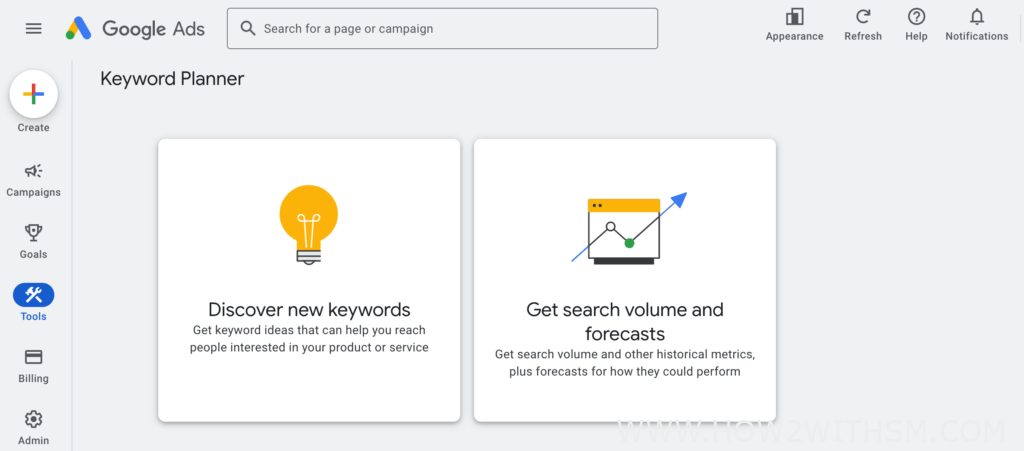
- Google Keyword Planner: Google’s own tool provides search volume data, keyword ideas, and competition levels. It’s a great starting point.
- SEMrush: SEMrush offers in-depth keyword research, competitive analysis, and related keyword suggestions. It can assist you in discovering the keywords that your competitors are focusing on.
- Ahrefs: Ahrefs is known for its comprehensive keyword data, including search volume, keyword difficulty, and more. It also offers valuable insights into keywords your competitors are using.
- Ubersuggest: Neil Patel’s tool offers keyword suggestions, search volume data, and insights into content performance.
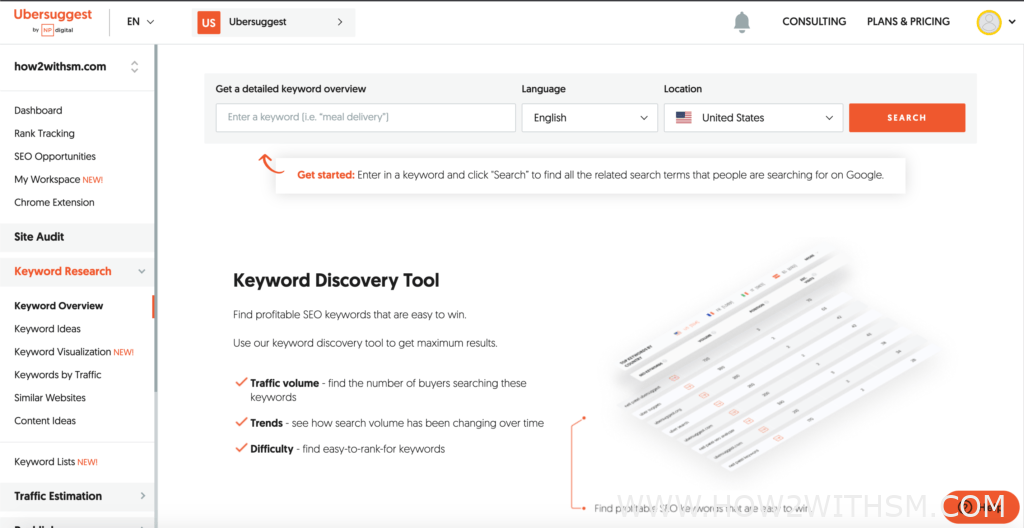
When using these tools, pay attention to:
- Search Volume: The average monthly searches for a keyword. Higher search volume indicates higher potential traffic.
- Keyword Difficulty: The level of competition for a keyword. Lower competition is ideal for longtail keywords.
- Related Keywords: Explore related keywords to discover additional longtail opportunities.
3.4 Analyze Competitors
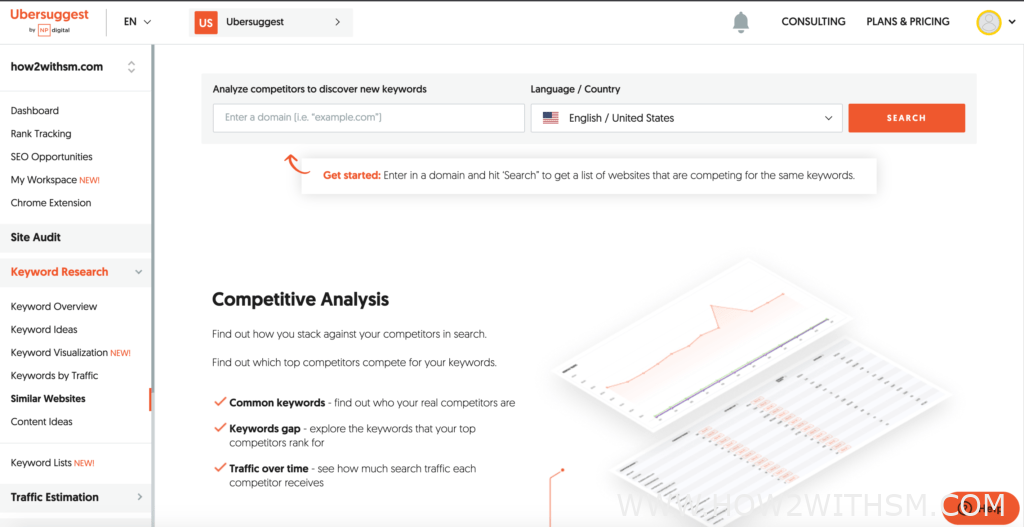
A great way to find relevant longtail keywords is by analyzing your competitors. Here’s how to do it:
- Identify your main competitors in your niche.
- Examine their websites and content. Look for keywords they are targeting in their articles, blog posts, and product descriptions.
- Identify gaps where you can create better, more informative content targeting the same keywords.
3.5 User Intent Analysis
Understanding the intent behind longtail queries is crucial. It helps you create content that aligns with what users are looking for. User intent generally falls into several categories:
- Informational: Users are seeking information. Create informative articles or blog posts.
- Navigational: Users are looking for a specific website or page. Ensure your content is easy to find.
- Transactional: Users are ready to make a purchase. Optimize product descriptions and sales pages.
- Commercial Investigation: Users are researching products or services. Provide comparison guides, reviews, or buying guides.
By aligning your content with user intent, you can improve user satisfaction and engagement.
3.6 Longtail Keyword Selection

After conducting your research and analysis, it’s time to select the most promising longtail keywords for your content. Consider the following factors:
- Search Volume: Aim for keywords with a reasonable search volume. They should be specific but not so niche that nobody is searching for them.
- Competition: Choose keywords with lower competition, especially if your website is relatively new or you want to outperform your competitors.
- Relevance: Ensure that the selected longtail keywords are highly relevant to your content and niche.
- User Intent: Match the intent of the keyword with the content you plan to create.
In the next section, we will explore how to create content around these carefully selected longtail keywords to maximize your SEO efforts.
Section 4: Creating Content Around Longtail Keywords
After conducting a thorough Longtail Keyword Analysis, the next crucial step is to craft content that aligns with the specific longtail keywords you’ve identified. In this section, we’ll explore the best practices for creating content optimized for longtail keywords, ensuring that your website ranks higher in search engine results and attracts a highly targeted audience.
4.1 Content Quality Is Key
When creating content around longtail keywords, prioritize quality. Ensure your content provides valuable information and engages your audience effectively. High-quality content not only satisfies user intent but also keeps visitors on your site longer, reducing bounce rates, and improving SEO rankings.
4.2 On-Page SEO Optimization
To maximize the effectiveness of your longtail keywords, ensure that your on-page SEO elements are optimized. Here’s how:
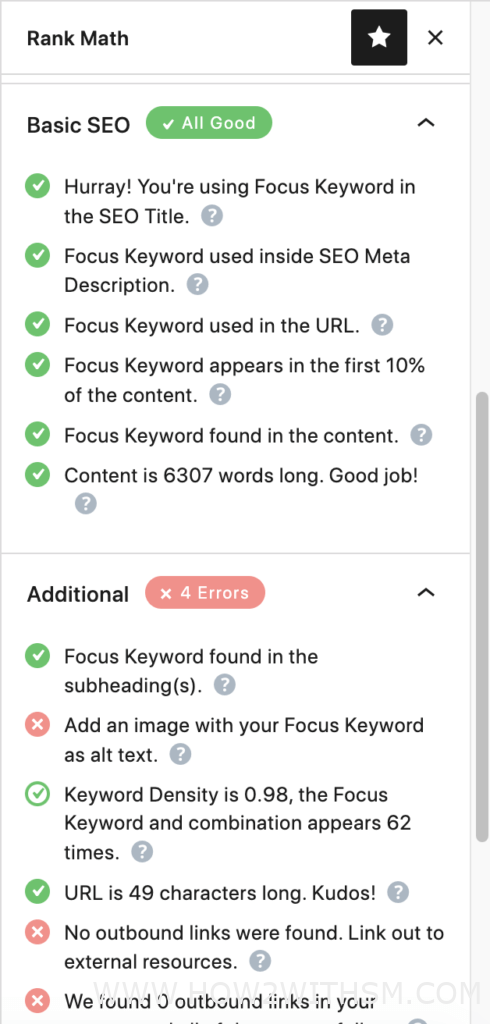
- Title Tags: Incorporate the longtail keyword naturally into your title tag. Make it compelling and relevant to attract clicks.
- Meta Descriptions: Craft meta descriptions that summarize the content and include the longtail keyword. Encourage users to click through to your page.
- Headers (H1, H2, H3, etc.): Use headers to structure your content. Include the longtail keyword in at least one header. This improves readability and SEO.
- Image Alt Tags: If your content includes images, use descriptive alt tags that incorporate the longtail keyword.
4.3 Comprehensive Answers or Solutions
Longtail keywords are typically associated with specific user queries. Your content should aim to provide comprehensive answers or solutions to those queries. In-depth, well-researched content is more likely to satisfy user intent, resulting in higher user satisfaction and improved SEO performance.
4.4 User-Friendly Formatting
Make certain your content is reader-friendly and easy to navigate. Employ concise paragraphs, bullet points, and subheadings to enhance text readability. This not only enhances the user experience but also makes your content more SEO-friendly.
4.5 Maintain a Natural Flow
While it’s important to include your longtail keyword in strategic locations within your content, avoid keyword stuffing. Your content should maintain a natural and conversational tone. Use synonyms and related terms to diversify your content and make it more reader-friendly.
4.6 Consistency and Updating
Creating content around longtail keywords is an ongoing process. Consistently produce fresh, high-quality content that incorporates new longtail keywords as they arise. Regularly update existing content to keep it relevant and valuable to your audience.
4.7 Internal and External Links
When appropriate, include internal links to relevant pages within your website. Furthermore, consider including links to reputable external sources to reinforce the credibility of your content. This not only adds credibility to your content but also improves the user experience.
4.8 Mobile Optimization

Optimize your content for mobile devices. With an increasing number of users accessing the internet via smartphones and tablets, mobile optimization is vital for both user experience and SEO.
By following these best practices and creating content tailored to your carefully selected longtail keywords, you’ll position your website to attract a highly targeted audience, improve search engine rankings, and ultimately achieve success in your Longtail Keyword Analysis journey. In the following sections, we’ll explore advanced strategies for competitive analysis, tracking success, and common mistakes to avoid.
Section 5: Competitive Analysis in Longtail Keyword Analysis
Understanding how your competitors approach Longtail Keyword Analysis is essential for devising a robust SEO strategy. In this section, we will explore the importance of competitive analysis, how to identify the keywords your competitors are targeting, and how to leverage this knowledge to gain a competitive edge.
5.1 The Significance of Competitive Analysis

Competitive analysis in Longtail Keyword Analysis allows you to:
- Identify Opportunities: By studying your competitors, you can uncover valuable longtail keywords they might be overlooking or not optimizing effectively.
- Benchmark Performance: Evaluate how well your website and content compare to your competitors regarding rankings and keyword targeting.
- Stay Relevant: In a dynamic online landscape, keeping an eye on your competitors ensures that you remain competitive and adaptive.
5.2 Identifying Competitor Keywords
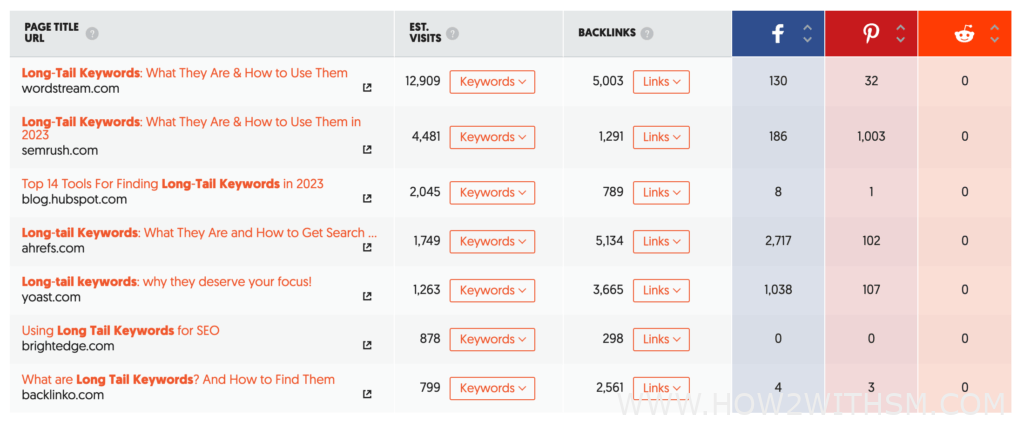
To conduct competitive analysis effectively:
- Identify Key Competitors: Begin by identifying your main competitors in your niche. These are the websites or businesses that share your target audience.
- Analyze Their Content: Examine their websites, blogs, product pages, and articles. Pay close attention to the keywords they are targeting in their content.
- Use SEO Tools: SEO tools like SEMrush, Ahrefs, and Moz can help you in this process. They provide insights into your competitors’ organic keywords and rankings.
- Focus on Content Gaps: Look for gaps where your competitors are not fully optimizing for longtail keywords. These gaps represent opportunities for you to create content that targets these specific queries.
5.3 Leverage Competitive Insights
Once you’ve identified the longtail keywords your competitors are targeting, use this knowledge strategically:
- Create Better Content: Develop high-quality content that surpasses what your competitors are offering. Provide more detailed, relevant, and valuable information.
- Optimize for the Same Keywords: If your competitors are successfully ranking for specific longtail keywords, consider optimizing your content for the same keywords to compete for those positions.
- Explore Related Keywords: Research related longtail keywords that your competitors might not have targeted. This allows you to diversify your keyword strategy and capture a broader audience.
5.4 Monitoring and Adaptation
Competitive analysis is a continuous endeavor, not a one-time assignment. Continuously monitor your competitors’ strategies and adapt your own as necessary. SEO tools can provide regular updates on your competitors’ keyword rankings, giving you insights into their evolving strategies.
5.5 Legal and Ethical Considerations
While competitive analysis is essential, it’s important to stay within legal and ethical boundaries. Avoid unethical practices like keyword plagiarism or intentionally misleading tactics. Instead, focus on delivering value and better user experiences.
By integrating competitive analysis into your Longtail Keyword Analysis strategy, you can gain valuable insights, discover new opportunities, and create content that not only targets the right longtail keywords but also surpasses your competitors. In the next section, we’ll explore how to track the success of your longtail keyword-focused content and the key metrics to watch for.
Section 6: Tracking Success in Longtail Keyword Analysis
One of the defining features of Longtail Keyword Analysis is its dynamic nature. To gauge the effectiveness of your efforts and adapt your strategy, you need a robust system for tracking success. In this section, we’ll explore the key metrics, tools, and strategies to monitor your performance and ensure that your longtail keyword-focused content is delivering the desired results.
6.1 The Importance of Tracking Success
Effective tracking not only measures your progress but also helps you identify areas for improvement. It ensures that you’re consistently optimizing your content and strategy for better results.
6.2 Key Metrics for Tracking Success
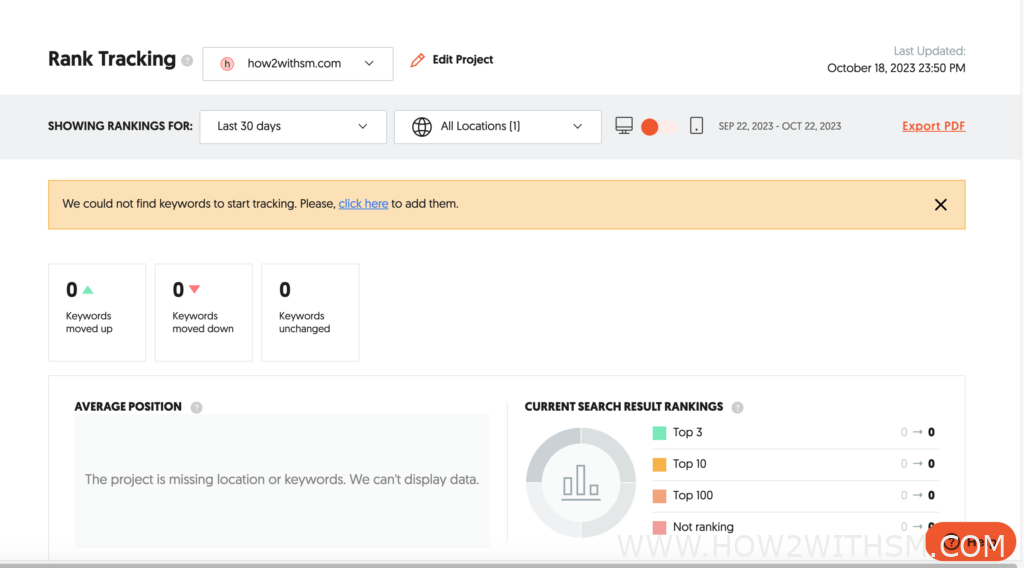
When tracking the success of your longtail keyword-focused content, pay close attention to the following key metrics:
- Keyword Rankings: Monitor how your content is performing for targeted longtail keywords. Are your rankings improving over time?
- Organic Traffic: Keep track of the organic traffic generated by your longtail keywords. Are you attracting a larger, more engaged audience?
- Click-Through Rate (CTR): Analyze the percentage of users who click through to your content when it appears in search results. A higher CTR indicates effective titles and meta descriptions.
- Bounce Rate: Track how many visitors immediately leave your site after viewing a single page. A lower bounce rate suggests that your content meets user expectations.
- Time on Page: Measure how long users spend on your pages. Longer time on page indicates engagement and user satisfaction.
- Conversion Rate: If your goal is to convert visitors into leads or customers, monitor the conversion rate. This holds particular significance for e-commerce platforms.
- Backlinks and Referral Traffic: Keep an eye on the number and quality of backlinks pointing to your content. Also, monitor referral traffic from these sources.
- Social Shares: If social media is a significant traffic source, track the number of shares, likes, and comments on your content.
6.3 Tools for Tracking Success
To efficiently track your success in Longtail Keyword Analysis, consider using the following tools:
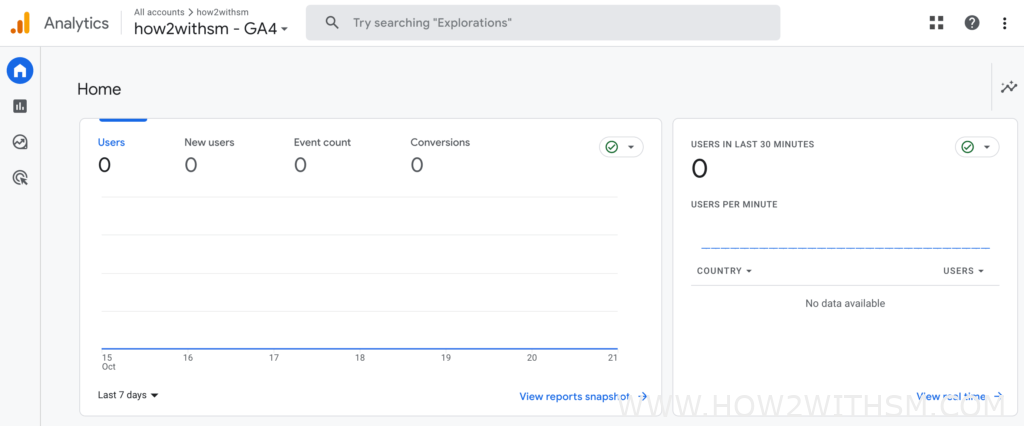
- Google Analytics: For monitoring organic traffic, CTR, bounce rate, time on page, and conversion metrics.
- Google Search Console: Provides insights into keyword rankings, CTR, and overall search performance.
- SEO Tools: Platforms like SEMrush, Ahrefs, and Moz offer comprehensive keyword tracking and SEO performance metrics.
- Social Media Analytics: If social media plays a role in your content distribution, monitor shares, likes, and comments using platform-specific analytics tools.
6.4 Regular Reporting and Analysis

To ensure that you’re consistently improving your content strategy, set up a regular reporting and analysis process:
- Weekly Monitoring: Check key metrics weekly to spot any sudden changes or issues.
- Monthly Reviews: Conduct more comprehensive monthly reviews to assess overall progress and make strategic adjustments.
- Quarterly and Yearly Assessments: At longer intervals, perform in-depth assessments of your longtail keyword-focused content strategy and adjust your approach accordingly.
6.5 Adapt and Optimize
Based on the insights gained from tracking success, be ready to adapt and optimize your content and strategy. If you notice that certain longtail keywords are performing exceptionally well, consider creating more content around those terms. Conversely, if some keywords are underperforming, reevaluate your approach and make necessary adjustments.
By consistently tracking the success of your Longtail Keyword Analysis efforts, you can refine your strategy, maximize results, and maintain a competitive edge in the dynamic world of SEO.
In the final section of this guide, we’ll explore common mistakes to avoid in Longtail Keyword Analysis to help you steer clear of pitfalls and make the most of your SEO strategy.
Section 7: Common Mistakes to Avoid in Longtail Keyword Analysis
While Longtail Keyword Analysis can be a powerful tool for enhancing your SEO strategy, there are several common pitfalls to steer clear of. In this section, we’ll highlight these mistakes and provide guidance on how to avoid them, ensuring that your efforts are effective and result in SEO success.
7.1 Neglecting User Intent
One of the most significant mistakes in Longtail Keyword Analysis is disregarding user intent. It’s crucial to understand why users are searching for specific longtail keywords. Creating content that doesn’t align with user intent can lead to high bounce rates and poor search engine rankings. To avoid this, always consider the user’s goals when optimizing for longtail keywords.
7.2 Over-Optimizing Content
Keyword stuffing, or over-optimizing content by excessively including longtail keywords, can harm your SEO efforts. It makes your content appear spammy and detracts from the user experience. Instead, focus on using keywords naturally and providing high-quality, valuable content.
7.3 Ignoring Competitive Analysis
Not paying attention to what your competitors are doing in terms of Longtail Keyword Analysis is a missed opportunity. Competitive analysis can uncover valuable keyword opportunities and show you where you can outperform your rivals. Regularly monitor your competitors and adapt your strategy accordingly.
7.4 Focusing Solely on High Search Volume Keywords
While high search volume keywords are appealing, it’s a mistake to overlook longtail keywords with lower search volumes. Frequently, these keywords face lower competition while drawing in extremely focused traffic. Diversify your strategy to include both high and low search volume longtail keywords.
7.5 Skipping Regular Updates
Longtail Keyword Analysis is an ongoing process, and your content needs to stay up-to-date to remain relevant and competitive. Failing to update your content can result in a drop in rankings and user interest. Develop a schedule for reviewing and refreshing your longtail keyword-focused content.
7.6 Disregarding Mobile Optimization
With a growing number of users accessing websites via mobile devices, neglecting mobile optimization is a grave mistake. Ensure that your longtail keyword-focused content is mobile-friendly and provides an excellent user experience on all screen sizes.
7.7 Not Prioritizing Quality
Longtail keywords are not a shortcut to success. Content quality remains paramount. Creating subpar content to target longtail keywords won’t yield the desired results. Focus on providing valuable, informative, and well-researched content to engage your audience effectively.
7.8 Relying on a Single Tool
While SEO tools are valuable, relying solely on one tool can limit your perspective. Use a combination of tools to gain a more comprehensive view of longtail keyword opportunities, rankings, and overall SEO performance.
By avoiding these common mistakes in Longtail Keyword Analysis, you can create a more effective SEO strategy that attracts a targeted audience, ranks well in search engines, and contributes to your online success. As you continue your journey in mastering longtail keywords, remember that a balance of strategy, analysis, and high-quality content is the key to long-term SEO achievement.
This concludes our guide on Longtail Keyword Analysis. We hope you found this information valuable and that it contributes to your success in the world of SEO.
Section 8: The Future of Longtail Keyword Analysis
As the digital landscape continues to evolve, so does the practice of Longtail Keyword Analysis. In this section, we’ll explore the trends and developments that are shaping the future of longtail keyword research and how you can stay ahead of the curve to maintain a competitive edge in SEO.
8.1 Voice Search and Conversational Keywords
Voice search is becoming increasingly popular with the proliferation of voice-activated devices like smart speakers and voice assistants on smartphones. Users tend to ask questions and use more conversational language in voice search queries. As a result, optimizing for conversational longtail keywords is vital. Consider how your target audience might phrase their questions and provide content that directly answers these queries.
8.2 Semantic Search and Contextual Understanding
Search engines are becoming more sophisticated in understanding the context of user queries. Rather than relying solely on individual keywords, they consider the user’s search history, location, and the overall context of the query. To adapt to this trend, focus on creating comprehensive, context-rich content that addresses various aspects of a topic.
8.3 Mobile-First Indexing
Google has implemented a mobile-first indexing approach, indicating that it predominantly utilizes the mobile version of a website for ranking and indexing purposes. This makes mobile optimization even more critical. Ensure that your longtail keyword-focused content is not only mobile-friendly but offers an exceptional user experience on mobile devices.
8.4 User Experience and Page Speed
User experience and page speed play a significant role in SEO rankings. Search engines give preference to websites that load rapidly and offer a smooth user experience. To remain competitive, optimize your longtail keyword-focused content for fast page load times and ease of navigation.
8.5 Video and Visual Search
Visual content, including images and videos, continues to gain importance. Search engines are improving their ability to analyze and understand visual content. Incorporate longtail keywords into image alt tags, video descriptions, and transcriptions to enhance visibility in visual and video search results.
8.6 Localization and Micro-Moments
Micro-moments refer to the instant when a user turns to a device to learn, do, discover, or buy something. Localized longtail keywords are crucial for capturing micro-moments, especially for businesses with a physical presence. Optimize your content to address local queries and ensure your business appears in local search results.
8.7 Artificial Intelligence and Machine Learning

Search engines are increasingly using artificial intelligence (AI) and machine learning to understand user intent and deliver more relevant results. Leverage AI tools and machine learning algorithms to identify emerging longtail keyword opportunities and tailor your content accordingly.
8.8 Regular Monitoring and Adaptation

The future of Longtail Keyword Analysis will require continuous adaptation and staying up to date with industry trends. Regularly monitor your SEO performance, stay informed about changes in search engine algorithms, and adapt your longtail keyword strategy to align with these developments.
In conclusion, the future of Longtail Keyword Analysis promises an exciting and dynamic landscape. By staying current with emerging trends and evolving your strategies accordingly, you can continue to harness the power of longtail keywords and maintain a strong online presence in the ever-changing world of SEO.
Section 9: Advanced Strategies for Longtail Keyword Analysis
As the digital landscape becomes more competitive, advanced strategies for Longtail Keyword Analysis are crucial to maintain an edge in SEO. In this section, we’ll delve into sophisticated techniques and approaches to uncover high-potential longtail keywords and optimize your content effectively.
9.1 Natural Language Processing (NLP)
With the rise of voice search and conversational queries, integrating Natural Language Processing into your Longtail Keyword Analysis can be a game-changer. NLP tools and models can help you understand user intent behind longtail queries and tailor your content to match the nuances of natural language.
9.2 Intent Modeling
User intent is a critical factor in Longtail Keyword Analysis. Intent modeling involves categorizing longtail keywords into various intent types, such as informational, navigational, transactional, or commercial investigation. By understanding the intent behind user queries, you can create content that precisely addresses their needs.
9.3 Content Clusters
Content clustering involves organizing related pieces of content around a central pillar page. Longtail keywords can be used to create subtopics within a broader topic. This strategy not only improves the user experience by guiding visitors through a comprehensive set of information but also strengthens your site’s overall SEO.
9.4 Schema Markup
Implementing schema markup can enhance the visibility of your content in search results. It provides search engines with structured data about your content, making it more appealing to users. Incorporate schema markup to highlight longtail keyword-rich information like product ratings, reviews, FAQs, and more.
9.5 Entity-Based SEO
Entity-based SEO focuses on optimizing content around entities (real-world concepts, people, places, or things) rather than just keywords. By understanding entities related to your content and incorporating them strategically, you can improve relevance and visibility for longtail keywords.
9.6 User-Generated Content
Encourage user-generated content, such as reviews, comments, or forums, that incorporate longtail keywords naturally. Not only does this increase user engagement, but it also provides additional keyword-rich content that can attract search engine traffic.
9.7 Predictive Analytics
Leverage predictive analytics to forecast emerging longtail keyword trends. Analyze historical data and industry insights to identify keywords that are likely to gain popularity in the near future. Being proactive in your content creation can give you an early advantage.
9.8 Mobile-First Strategy
A mobile-first strategy is no longer optional. Ensure that your longtail keyword-focused content is not only mobile-friendly but designed with a mobile-first mindset. Mobile optimization is crucial for rankings and user satisfaction.
9.9 User Experience (UX) Optimization
SEO and UX are intertwined. A positive user experience, including fast page load times, intuitive navigation, and engaging design, is essential for SEO success. Longtail keyword-focused content should provide an exceptional user experience.
9.10 Regular Audits and Updates
Continuously audit your longtail keyword-focused content. Identify areas for improvement, outdated information, and opportunities for expansion. Ensure your content remains current and pertinent for both your audience and search engines.
By incorporating these advanced strategies into your Longtail Keyword Analysis, you can adapt to the evolving SEO landscape and maintain a competitive advantage. Stay proactive, stay informed, and always prioritize user experience and high-quality content to achieve long-term SEO success.
Section 10: Measuring the ROI of Longtail Keyword Analysis
To determine the success of your Longtail Keyword Analysis efforts, it’s essential to measure the return on investment (ROI). In this section, we’ll explore the methods and metrics you can use to evaluate the effectiveness of your longtail keyword strategy and justify the resources invested.
10.1 Defining ROI in Longtail Keyword Analysis
ROI, in the context of Longtail Keyword Analysis, represents the value gained from your efforts compared to the resources spent. The goal is to measure the tangible benefits, such as increased organic traffic, higher rankings, and, ultimately, the impact on your business’s bottom line.
10.2 Key Metrics for ROI Measurement
To measure ROI effectively, focus on these key metrics:
- Organic Traffic: Analyze the growth in organic traffic driven by your longtail keyword-focused content. This metric indicates the effectiveness of your strategy in attracting visitors.
- Keyword Rankings: Monitor the improvement in your rankings for targeted longtail keywords. Higher rankings mean better visibility and more traffic.
- Conversion Rate: If your goal is to convert visitors into leads or customers, track the conversion rate for longtail keyword-related traffic. It shows how well your content encourages action.
- Bounce Rate: A decreasing bounce rate signifies that visitors are finding your content relevant and engaging, resulting in a positive user experience.
- Time on Page: Measure the average time visitors spend on your longtail keyword-focused content. Longer engagement often leads to more interactions and conversions.
10.3 Monetary Value Attribution
Assign monetary values to the metrics you track. Calculate the revenue generated from the increased organic traffic, conversions, and improved rankings. By directly tying these metrics to revenue, you can demonstrate the financial impact of your Longtail Keyword Analysis.
10.4 Cost Analysis

Determine the costs associated with your Longtail Keyword Analysis efforts. These costs might include content creation, SEO tools, and any additional resources or labor involved. A detailed cost analysis allows you to compare investments with returns.
10.5 ROI Calculation
Calculate the ROI using the following formula:
ROI (%) = (Net Profit – Investment Cost) / Investment Cost x 100
- Net Profit: The revenue generated from your Longtail Keyword Analysis efforts, minus the associated costs.
- Investment Cost: The total cost of your Longtail Keyword Analysis, including content creation, SEO tools, and labor.
A positive ROI indicates that your longtail keyword strategy is delivering value beyond your initial investments.
10.6 Long-Term Analysis
ROI measurement in Longtail Keyword Analysis should extend beyond short-term gains. Consider the long-term impact of your strategy on organic traffic, rankings, and conversions. Over time, a well-executed strategy can provide sustained benefits.
10.7 Continuous Optimization
To maximize ROI, continue to optimize your longtail keyword-focused content and strategy. As you identify what’s working and what needs improvement, refine your approach to enhance ROI over time.
10.8 Reporting and Communication
Present your findings and ROI to stakeholders, colleagues, or clients. Clear communication of the value delivered by your Longtail Keyword Analysis can secure support for ongoing efforts and resources.
By measuring the ROI of your Longtail Keyword Analysis, you can demonstrate the tangible benefits of your strategy and make informed decisions to optimize your approach further. It’s a crucial step in justifying your investment and ensuring that your SEO efforts continue to drive results for your business.
Section 11: Challenges and Solutions in Longtail Keyword Analysis

While Longtail Keyword Analysis can be a potent SEO strategy, it comes with its share of challenges. In this section, we’ll explore common challenges faced by SEO professionals and content creators in the realm of longtail keywords and provide effective solutions to overcome them.
11.1 Challenge: Identifying the Right Longtail Keywords
Solution: Use a combination of keyword research tools, competitive analysis, and an understanding of your target audience. Conduct comprehensive research to uncover the most relevant longtail keywords and refine your list over time.
11.2 Challenge: Content Quality
Solution: Prioritize high-quality content creation. Conduct thorough research, provide valuable insights, and focus on user intent. Ensure that your content answers user queries effectively.
11.3 Challenge: Competitive Landscape
Solution: Regularly monitor your competitors and adapt your strategy accordingly. Identify gaps and opportunities where you can surpass your rivals. Leverage competitive analysis tools to stay ahead.
11.4 Challenge: Tracking Success
Solution: Establish a robust tracking system that monitors key metrics, including rankings, organic traffic, CTR, and conversion rates. Use analytics tools and regularly review your progress to make data-driven decisions.
11.5 Challenge: Staying Current with SEO Trends
Solution: Stay informed about the latest SEO trends and developments. Subscribe to industry news, follow SEO thought leaders, and attend webinars or conferences. Continuously adapt your longtail keyword strategy to align with emerging trends.
11.6 Challenge: Content Diversity
Solution: Don’t rely solely on written content. Broaden your content by incorporating multimedia elements such as videos, infographics, and podcasts.
11.7 Challenge: Mobile Optimization
Solution: Prioritize mobile optimization in your longtail keyword-focused content. Ensure that your website and content are responsive and provide an excellent user experience on mobile devices.
11.8 Challenge: User Intent
Solution: Develop a deep understanding of user intent behind longtail keywords. Create content that directly addresses user queries and provides valuable solutions or information.
11.9 Challenge: International and Multilingual SEO
Solution: If your audience is global, invest in international and multilingual SEO strategies. Use language-specific longtail keywords and adapt your content for different regions.
11.10 Challenge: User-Generated Content Management
Solution: Encourage user-generated content but have a moderation and management system in place to filter and control the quality of contributions. This ensures that user-generated content aligns with your SEO and content strategy.
By understanding these common challenges and implementing the provided solutions, you can navigate the complexities of Longtail Keyword Analysis more effectively. Successful Longtail Keyword Analysis involves an ongoing commitment to research, optimization, and adaptation, but the rewards in terms of increased traffic and better search engine rankings make it well worth the effort.
Conclusion: Mastering Longtail Keyword Analysis for SEO Success

In the dynamic realm of Search Engine Optimization, mastering Longtail Keyword Analysis stands as a cornerstone for achieving success. This comprehensive guide has delved into the depths of longtail keyword research, optimization, and the challenges you may encounter. As we conclude, let’s recap the key takeaways:
- Longtail Keywords: The Foundation: Longtail keywords, while individually less searched, collectively hold immense potential in attracting a highly targeted audience.
- Optimizing for User Intent: Understanding and addressing user intent behind longtail keywords is paramount. Create content that genuinely satisfies queries.
- Competitive Analysis: Keep an eye on what your competitors are doing, identifying opportunities to outperform and create unique content.
- On-Page SEO: Optimize your content with on-page elements such as title tags, meta descriptions, headers, and image alt tags.
- Creating Valuable Content: Prioritize high-quality, informative, and engaging content to both satisfy users and please search engines.
- Tracking Success: Regularly monitor key metrics like keyword rankings, organic traffic, CTR, and conversions to gauge the effectiveness of your strategy.
- Adapt and Optimize: SEO is an ever-evolving field. Continuously adapt to trends and industry shifts.
- Proving ROI: Use metrics to calculate the return on investment from your Longtail Keyword Analysis efforts, demonstrating the tangible benefits to stakeholders.
- Advanced Strategies: Stay ahead by implementing advanced techniques like NLP, intent modeling, content clusters, schema markup, and predictive analytics.
- The Future of Longtail Keywords: Be prepared for the future, where mobile optimization, voice search, and AI-driven search engines will shape the landscape.
- Challenges and Solutions: Understand common obstacles and utilize the provided solutions to overcome them effectively.
In conclusion, Longtail Keyword Analysis is not merely a tactical SEO approach; it’s a journey of understanding user needs, adapting to trends, and consistently delivering value. The combination of in-depth research, content excellence, user-centric focus, and adaptation to the ever-changing digital landscape ensures your SEO success.
By applying the knowledge gained from this guide and remaining dedicated to the principles of Longtail Keyword Analysis, you’re equipped to navigate the complexities of SEO, unlock new opportunities, and achieve lasting success in the ever-evolving world of search engines. Your journey to SEO mastery begins with mastering the art of longtail keywords.

